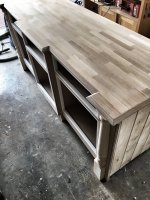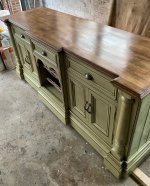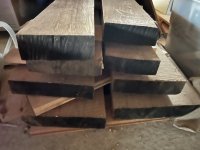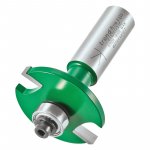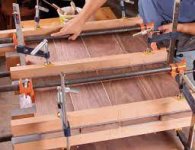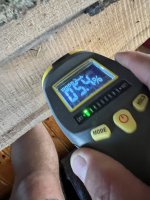I am finally starting my table build. I have Cherry ruff sawn some live edge slightly thicker than 8/4 and 4/4. My goal is a new dining room table. I hope to do a spin on a trestle table but my first question is about the top. I was going to glue up some Cherry like a butcher block top but have since wondered if maybe that is a good idea. My 8/4 planks vary in width from 6" to just over 10" in width. Just glue them up but should I use a spline or some other method of alignment? I have never worked pieces this thick. I will use some c channels on the bottom with slots to allow some movement. But other than that what other considerations should I make? I know it will be a heavy beast, and that is my intention. The style I hope to be similar to an RPG guild hall table, if any of you are gamers, with a very large inlay on top. Tools at my disposal are a small contractors table saw, Jet 14" band saw, TS55, OF1400, Powermatic 6" jointer and 14" planer helical heads, Shaper Origin and various hand planes finger-sized up to long jointer hand planes, a RO90 and 150, and other assorted hand tools you would expect from someone doing woodworking for 50 years or so. All the fancy stuff is new in the last few years, before that it was all hand tools. I thought of adding a ts75 for this project because of the cutting depth but I do have a long compression bit the OF1400 that should be able to spin but I wonder about deflection in it. Any thoughts or considerations I should make that I have missed would be greatly appreciated. Thanks!
I would rather not buy a new tool, but, if the consensus is the larger TS is a better way to cut rather than use the TS55 and the OF with the compression bit, I will give it some consideration. I want this to be a one-and-done project. No redo's or covering up mistakes. My goal is to be as close to perfect as I can on the first try. Thanks again!
I would rather not buy a new tool, but, if the consensus is the larger TS is a better way to cut rather than use the TS55 and the OF with the compression bit, I will give it some consideration. I want this to be a one-and-done project. No redo's or covering up mistakes. My goal is to be as close to perfect as I can on the first try. Thanks again!

